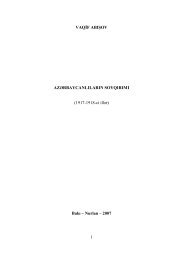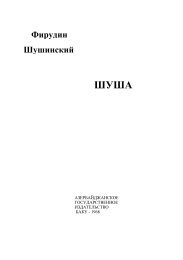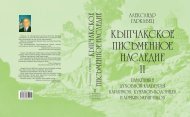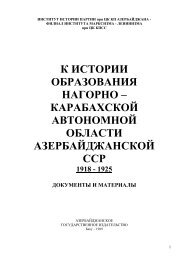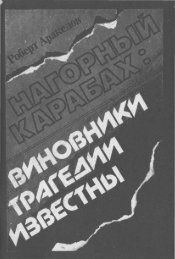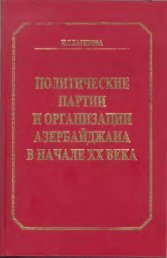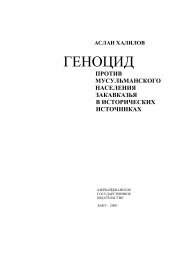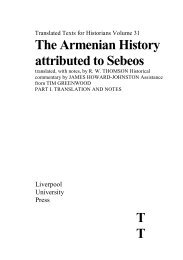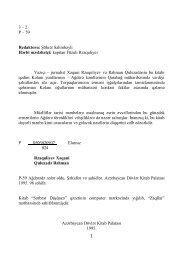ARMENIAN - Erevangala500
ARMENIAN - Erevangala500
ARMENIAN - Erevangala500
Create successful ePaper yourself
Turn your PDF publications into a flip-book with our unique Google optimized e-Paper software.
and Karatheodori and Mehmed Ali of the Ottoman<br />
Empire. The only purpose o f the Congress was to<br />
remove those conditions from the dictate o f San<br />
Ste-fano which were too oppressive for the<br />
Ottomans. And that is just what was done. The<br />
strong Armenian delegation, under the leadership of<br />
Prelate Khrimian - a former Armenian patriarch -<br />
had travelled to Berlin in vain. It was already common<br />
knowledge that the Armenians did not constitute<br />
a majority anywhere in Anatolia. It was only in<br />
Van itself that they even made up a third of the population.<br />
No one wanted to grant autonomy to such a<br />
minority. On what grounds could such an action be<br />
justified?<br />
On the 8th of July, 1878, the Congress replaced<br />
Article 16 of San Stefano with "Article 61", which<br />
for the most part corresponded to the original.<br />
Article 62 also dealt with religious freedom, but<br />
nowhere was there any talk of autonomy. The<br />
Armenian millet was simply not large enough for<br />
that. The nineteenth century had become a century<br />
o f the triumph of the nation states - but also of the<br />
democratic majority. Bulgaria, Serbia, Greece, and<br />
Romania all became independent, but in every case<br />
the nation constituted a solid majority.<br />
In the case o f the Armenians, the situation was totally<br />
different. It may have been true that an Armenian<br />
king had once ruled over an Armenian kingdom in<br />
the vast territories that the Armenians were claiming,<br />
but that had been almost two thousand years<br />
earlier under totally different circumstances. The<br />
nineteenth century called for majorities, and it was<br />
the Moslems who had the majorities - throughout<br />
Anatolia.<br />
There were certain Armenian circles that simply<br />
could not come to terms with these facts. Groups of<br />
revolutionaries, intellectuals, and clergymen, egged<br />
on primarily by the Russians but also to some extent<br />
by the missionaries, turned to ever more daring and<br />
adventurous means in order to attract attention and<br />
eventually gain power over the majority.<br />
Meguerditch (or KHIRMIAN (1821 - 1907) with nickname<br />
"Hayrig" (little father) patriarche o f Constantinople (Istanbul)<br />
(1899 - 1873) then catholicos (1893 - 1907) responsible for the<br />
foundation of the extremist group YERG IR, "the way, how the<br />
Haik called their correspondent home."<br />
Khirmian, a ruthless Armenian nationalist - his religion was not<br />
Christianity but Nationality traveled 1878 to Berlin in order to<br />
present the Armenian demands at the congress. At Edime he<br />
met the tarist invadors which was considered by the Ottomans<br />
as high treason.<br />
He worked close together with the Armenian officers serving in<br />
the Russian army (mainly with Loris Melikian, general<br />
Lazarian and general Ter-Goukassian in Eastern Anatolia. The<br />
whole enterprise was a typical rehearsal for the Russo -<br />
Armenian attack against Ottoman East-Anatolia 1915. He was<br />
one of the creators of the "Mouvement Revolutionnaire HAY"<br />
which ended disastrous.<br />
The Selimie of Edime, a masterpiece by Mimar Sinan. Representatives<br />
of the Armenian patriarch (Khrimian) of Istanbul met<br />
in Edime in 1878 with the victorious Russians. The Ottomans<br />
saw this as shameless treachery.



